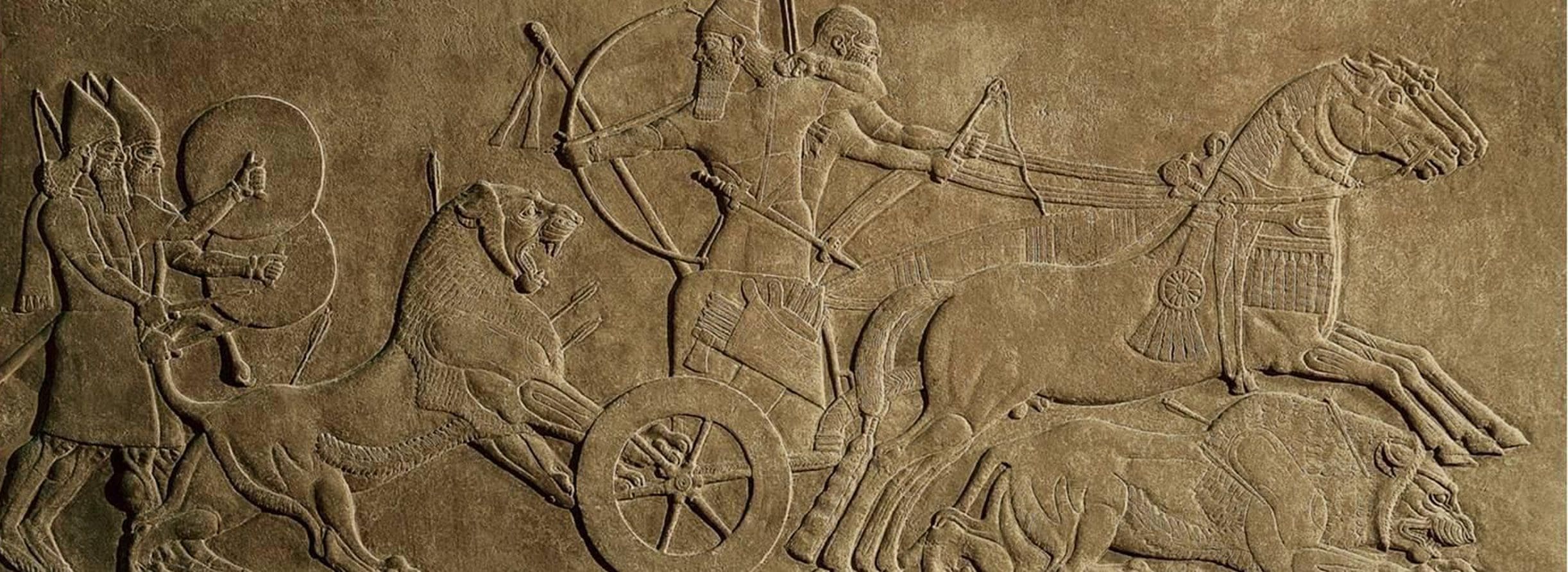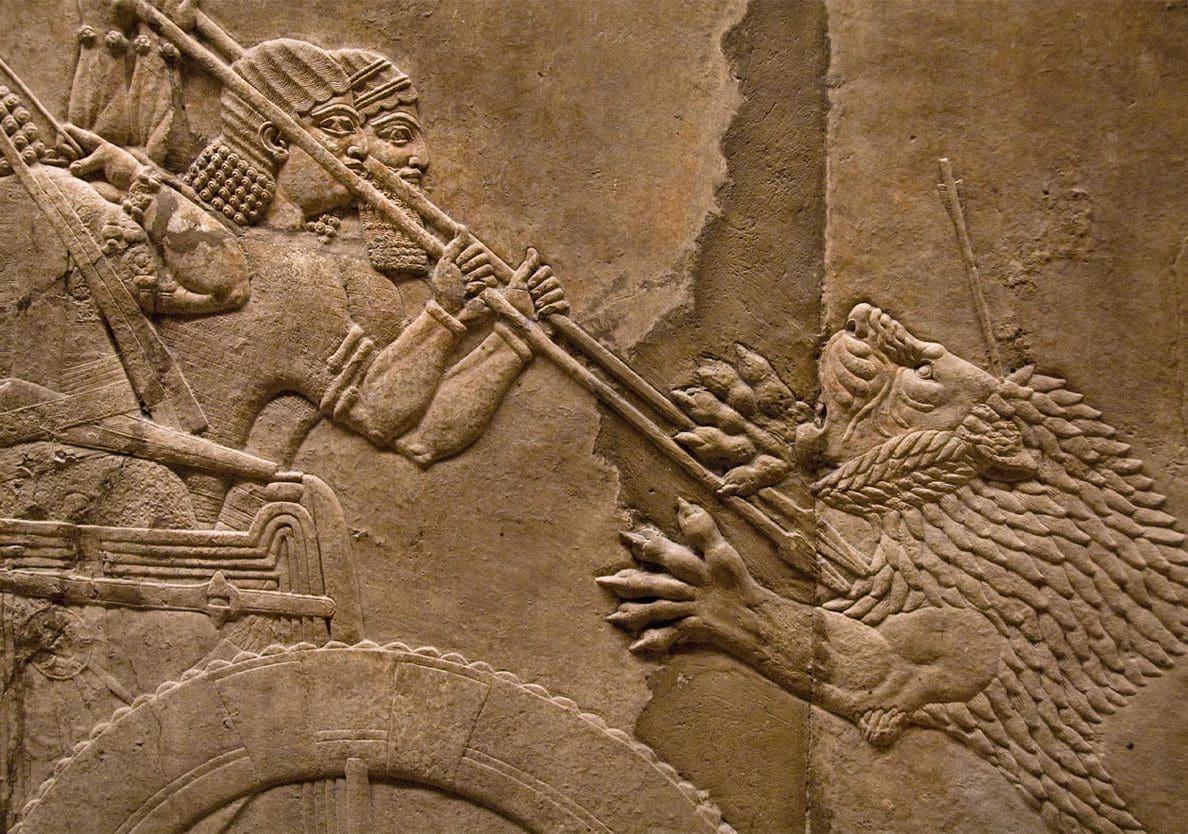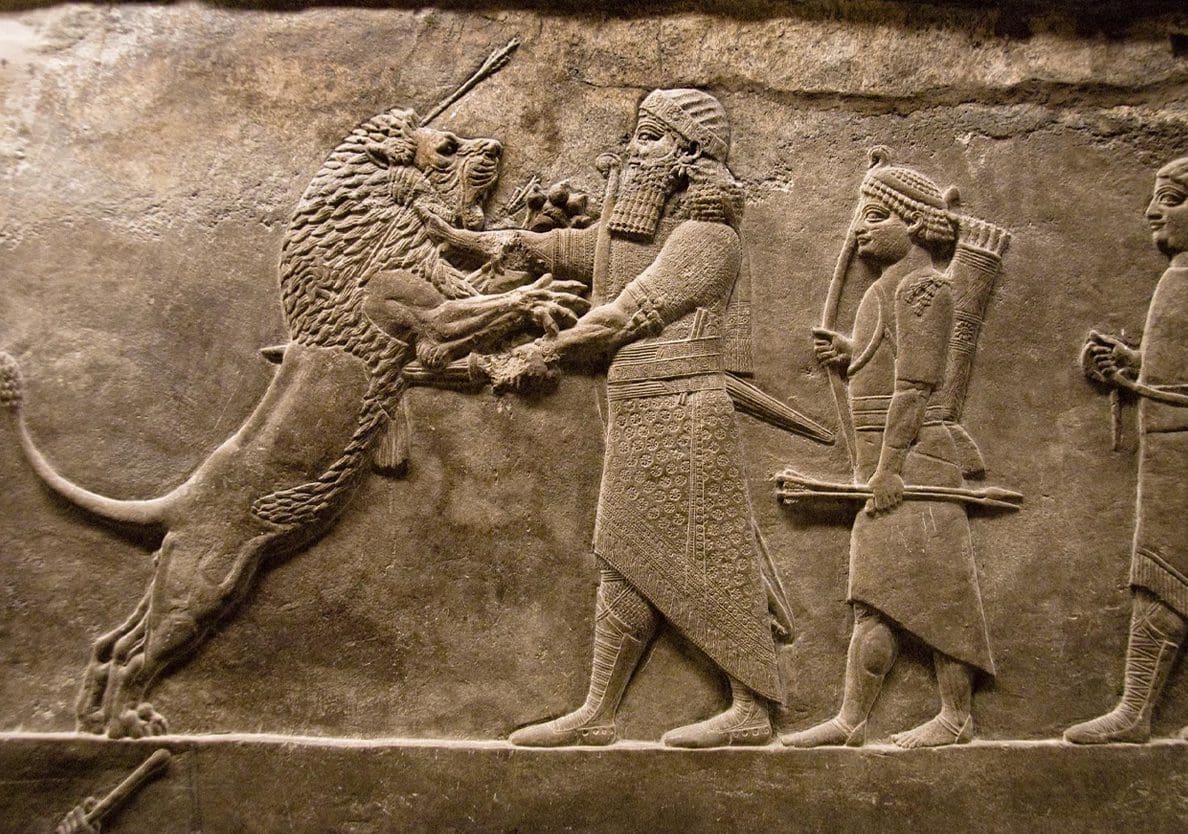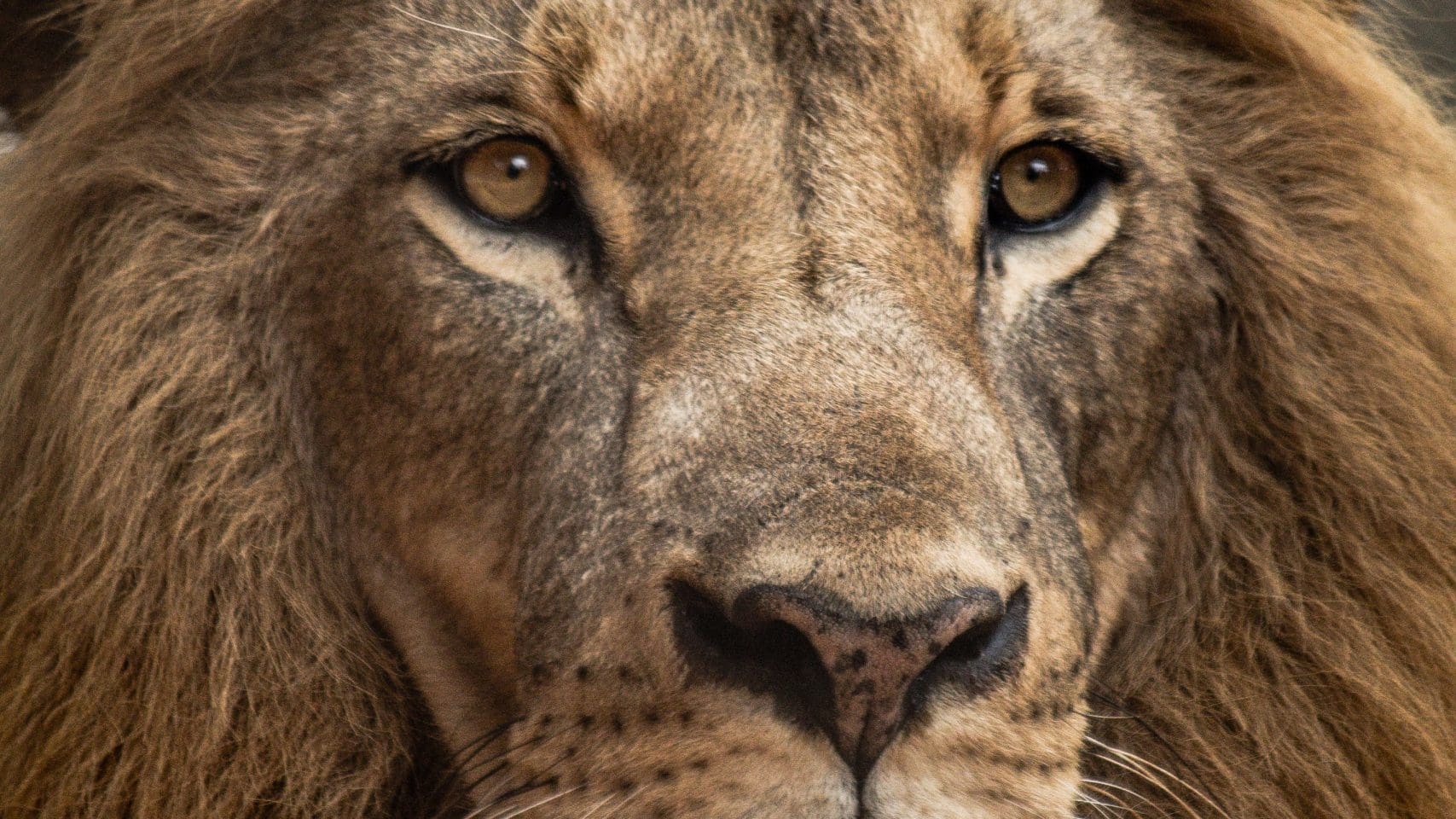The lion was one of the main predators of ancient Israel and as such, it’s mentioned often in the Bible. Today, the wild Asiatic lion is extinct in the middle east. A modern cousin lives in captivity in small numbers, thanks to conservation efforts, but as such is inherently different from its ancient counterpart. From references in the Bible, the lion could be found throughout the land of Israel, regardless of topography.[1] They were considered one of the animals that shepherds had to protect their herds and flocks from. Even David, before he was king, claimed to have defeated lions and bears attacking his sheep (1 Samuel 17:34-37). Lions are also said to have occasionally attacked humans – Samson in Judges 14:5, a man of God in 1 Kings 3:24, and the post-Assyrian invasion in 2 Kings 17:26 – though this was likely not typical behaviour.
It is an interesting correlation that just as the role of shepherd was associated with kings, so was the lion.[2] As shepherd of the people, it was the king’s job to establish and maintain order and safety for his flock, protecting them from predators and dangers and providing them with sustenance. On the surface, the mighty and terrifying lion also provides an apt symbol for the power, strength, and persistence of a good king. As king of the wild, the lion fears only man. As king of his nation, the ruler fears only God or the gods, depending on his culture.

The lion’s association with kingship may reach even deeper, however, as expressed by Neo-Assyrian culture. Their empire was the one that destroyed the Northern Kingdom of Israel (722 BC) and severely humbled Southern Judah under King Hezekiah (2 Kings 18-19), even making her a subservient or vassal kingdom for a time. On the walls of excavated Assyrian palaces are carvings that depict royal lion hunts, and in her literature, explanations of these hunts seem to move them beyond sport and into ceremony. The Assyrian kings believed they had a mandate from the gods to bring nature or the wild under control: to tame or civilize even the wildlife. The lion served as the symbol for all this untamed chaos. By successfully hunting a lion, likely as part of their coronation, Assyrian kings took the place of the lion as king, even of the untamed world. They would not only protect their citizens from the wild but actively had power over it.
The lion’s kingly association is more ancient than the Neo-Assyrian Empire. Kingly lion hunting scenes survive from the third millennium BC kingdom of Uruk, as well as from Egypt.[3] And Lion imagery adorns a king’s mace head from Kish (26th century BC).[4]


In the Bible, King Solomon’s throne was reached by 6 stairs flanked by a total of twelve lion statues, perhaps symbolizing the mighty king-like power of the twelve tribes of Israel ruled over by the ultimate king, himself. At least in that early time of the kings, it was a mighty thing to kill a lion as seen by David’s claim to have defeated them (1 Samuel 17:34-37), one of his mighty men, Benaiah, claimed to have as well (2 Samuel 23:20), and, of course, the famous story of the judge Samson killing a young aggressive lion with his bare hands (Judges 14:6).
It is not known whether Israelite kings ever participated in kingly lion hunts, but it is possible that there were some unlawful lion cults or ceremonies that took place. This is hinted at by lion-shaped cultic objects (i.e., lion’s head incense spoon, 9th century BC)[5], and by a lion bone found in Northern Israel’s apostate high place in Dan.

Corie Bobechko is a daily co-host, speaker, and writer of Bible Discovery. She also hosts a YouTube channel that shows how history and archaeology prove the Bible. Her heart for seekers and skeptics has led her to seek truth and share it with others. Corie also has a Bachelor of Theology from Canada Christian College.
[1] Borowski, Oded. Every Living Thing: Daily Use of Animals in Ancient Israel. Altamira Press (1998).
[2] Dick, Michael B. “The Neo-Assyrian Royal Lion Hunt and Yahweh’s Answer to Job” Journal of Biblical Literature (2006). 125:2, pp 243-270.
[3] Borowski (1998), pp. 197-8.
[4] Dick (2006), p.245.
[5] Borowski (1998), p.199.






